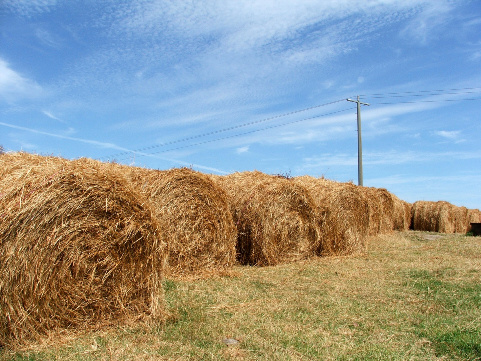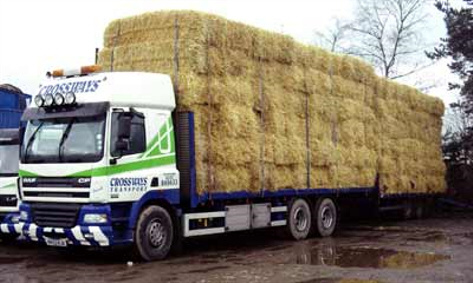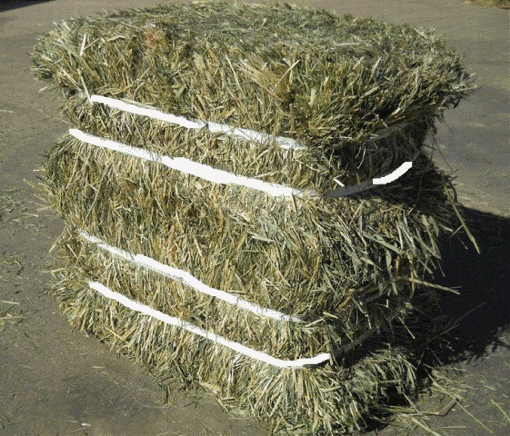Fodder & Feed
We at Farmer's Garden pride ourselves with our range of Fodder and Feed supplies.
Packaging Sizes:
25Kg Half Cut Bale
50Kg Full Bale
100 Kg Mega Bale
400Kg Sleeve Big Bale
Alfalfa Hay
Alfalfa Hay, Medicago Sativa, also known as Lucerne hay or Lucerne grass, is one of the most important forage crops cultivated in agriculture. It is widely grown throughout the world as forage for cattle and is typically harvested as hay. Alfalfa has the highest feeding value of all commonly grown hay crops. When grown on well-adapted soils, alfalfa is the highest yielding forage plant. Alfalfa Hay is used primarily for dairy cattle but is also fed to beef cattle, horses, sheep, goats and camels. One of the most important characteristics of alfalfa is its high nutritional quality as a “complete” animal feed. Alfalfa contains between 15% to 23% crude protein, as well as an excellent source of vitamins and minerals.
Bermuda Grass
Bermuda Grass, Cynodon Dactylon, is a perennial warm season grass that is grown throughout the Southern United States including the Imperial Valley. Bermuda Grass is grown primarily for seed production used in commercial and residential turf applications. Bermuda Grass is very drought tolerant and when irrigated, produces a high quality grass hay. Due to the long growing season in the Imperial Valley, Bermuda grass farmers are able to make a seed crop followed by multiple Bermuda Hay crops. When irrigated with a good farm management and growing practices, farmers produce high quality grass hay that is used widely in the domestic and export markets. Bermuda Straw is a by-product of a Bermuda seed crop. After the seed is harvested, the remaining forage is baled. Bermuda Straw is a low cost feed source that is used as a “filler” in feed rations for cattle. It has become popular in the Asian markets with beef cattle producers as these feeders desire a product that is very low in beta-carotene. Bermuda Straw quality is based on customer preference as some customers prefer greener color straw while others prefer light colored Bermuda Straw.
Klein Grass
Klein Grass, Panicum Coloratum, is a warm season perennial bunchgrass that is planted in the southwestern portion of the United States for hay production and grazing. Klein Grass is a native grass of Africa and was first introduced into the United States in the 1950’s. Klein Grass is grown primarily as a pasture grass but in recent years it has been farmed to make hay in the Imperial Valley area of California. Klein Grass can grow up to 1 meter tall and is a fine stemmed leafy plant. Klein Grass is palatable and nutritious for cattle. When Klein Grass is grown for hay it is typically harvested at a younger stage of growth. Harvesting at a younger stage helps to produce a fine stem, soft and leafy grass hay that is very palatable and nutritious for many types of animals.
Sudan Grass
Sudan Grass, Sorghum Sudanense, is a warm season annual grass that is adaptive to the dry, arid growing conditions in the southwestern United States during the spring and summer seasons. Sudan Grass has become a very popular crop in the Imperial Valley region of California. Sudan is planted in the spring and early summer months and harvested from June through September. Sudan is typically harvested two times per season and is exported throughout Asia for both dairy and beef With good growing practices sudan will produce a fine stem, soft textured grass hay with a high leaf-to-stem ratio. The first cutting of sudan typically produces the finest stem product and the later cuttings will have coarser stem. Sudan Grass is a high-quality, long fiber grass hay that can be fed directly to cattle or as part of a mixed ration. It is an excellent source of dietary fiber that provides active rumen stimulation.
Timothy Grass
Timothy Grass, Phleum Pretense, is a cool season perennial grass native to most of Europe. It grows from 50-150 cm tall with leaves up to 45 cm long and 1 cm wide. The flowerhead is 7 to 15 cm long and 8 to 10 cm broad, with densely packed spikelets.
Timothy Grass is grown primarily in the northeastern portion of the United States and also grown in California and Nevada. Timothy is not a very drought tolerant plant and does not respond well to excessive heat. Timothy grows best in areas with abundant day length and moisture. Timothy Grass Hay is commonly fed to horses, as well as cattle. It is relatively high in fiber, especially when cut at a later or more mature stage.
Timothy is typically harvested two times per season, the first cutting in early summer and the second cutting in late summer or early fall. The first cutting is typically preferred for feeding to horses as it has longer and harder fiber length, as well as longer seed heads. Some first cutting is also fed to cattle. Second cutting is typically fed to cattle, but in some cases is also utilized for horses.



